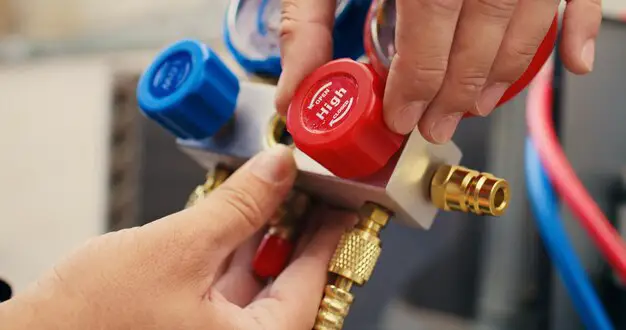How to Calculate Subcooling | The Ultimate Guide
Articles, products, and services offered on this site are for informational purposes only. We are part of the Amazon Services LLC Associates Program, an affiliate advertising program. Amazon.com is compensated for sales resulting from links on our website.
Please review our disclaimer before acting based on anything you read or see.
## What is subcooling? Subcooling is an essential concept in the field of refrigeration and air conditioning. It refers to the process of lowering the temperature of a liquid refrigerant below its saturation point. In simpler terms, subcooling reduces heat energy from the refrigerant after it has completed the condensation process. This results in a more efficient and effective cooling system.
Importance of calculating subcooling

Calculating subcooling is crucial for several reasons. Firstly, it helps ensure the refrigerant is liquid before entering the expansion valve. This is important because if any vapor remains in the refrigerant, it can cause damage to the compressor and other components of the system.
Secondly, subcooling allows for more accurate refrigerant charge measurements, preventing overcharging or undercharging of the system. Lastly, calculating subcooling helps identify any issues or inefficiencies in the system, allowing for timely maintenance and repair.
The subcooling process
The subcooling process removes additional heat energy from the refrigerant after condensing it. This is typically done using a subcooling coil or heat exchanger. The coil is placed in the liquid line right after the condenser, and its purpose is to cool the refrigerant further.
By reducing the temperature of the refrigerant below its saturation point, subcooling ensures that the refrigerant remains in its liquid state until it reaches the expansion valve.
Tools needed to calculate subcooling

To calculate subcooling, you will need a few essential tools. Firstly, you will need a reliable and accurate pressure gauge to measure the pressure of the refrigerant at various points in the system. Additionally, you will need a thermometer to measure the temperature of the refrigerant. Using a digital thermometer with high accuracy for precise readings is recommended. Lastly, you may require a calculator to perform the necessary calculations based on the pressure and temperature measurements.
Step-by-step guide to calculating subcooling
Calculating subcooling can be broken down into three simple steps:
Step 1: Measure the pressure
Using a pressure gauge, measure the pressure of the refrigerant at the liquid line right after the condenser. Make sure to record the pressure accurately.
Step 2: Measure the temperature
Using a thermometer, measure the temperature of the refrigerant at the same point where you measured the pressure. Again, record the temperature accurately.
Step 3: Calculate the subcooling
To calculate the subcooling, subtract the saturation temperature corresponding to the measured pressure from the actual measured temperature. The saturation temperature can be obtained from refrigerant pressure-temperature charts or tables. The result will give you the subcooling value in degrees Fahrenheit or Celsius, depending on the units used.
Benefits of accurate subcooling calculations
Accurate subcooling calculations offer several benefits. Firstly, it ensures that the refrigerant is in its optimal state, preventing any potential damage to the system. Secondly, it improves the cooling system’s energy efficiency, as subcooling allows for more efficient heat transfer. This results in lower energy consumption and reduced operational costs. Lastly, accurate subcooling calculations help prolong the system’s lifespan by minimizing wear and tear on the components.
Conclusion
In conclusion, calculating subcooling is critical to refrigeration and air conditioning systems. It ensures the system’s proper functioning, prevents damage, and improves energy efficiency. Following the step-by-step guide in this article, you can accurately calculate subcooling and reap the benefits of a well-maintained and efficient cooling system. Remember, accurate subcooling calculations are essential for optimal performance and longevity.



Comments are closed.